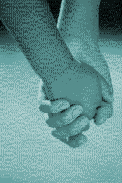Protecting our Children: Reporting Child Abuse and Neglect

Suspected child abuse or neglect deserves prompt reporting to local law enforcement, social services or child protective services. An attitude of "it is not my child, business or responsibility" is irresponsible. Educators are in particularly important positions to assist with the prevention of child abuse or neglect.
It must always be remembered that an individual is innocent until proven guilty and that any deliberate false reporting with the purpose of harassing or to gain unfair leverage in a child custody case is morally reprehensible as well as criminally culpable.
[Reprinted from the Tennyson Center for Children website – http://www.childabuse.org/recognizing%20abuse.html]
You should know about these signs...When you have concerns for a child's well-being, the indicators listed below may help guide you in your thought process. Many of these "symptoms" or "signs" could be caused by things other than abuse or neglect. Generally, these indicators do indicate that a child's safety may be at risk and, at the very least, the situation should be assessed by a professional who is able to determine the causes of these symptoms and offer the help and assistance necessary to reduce the risk to a child.
Signs of Physical Abuse
Physical Indicators:- Unexplained bruises and welts on the face, throat, upper arms, buttocks, thighs or lower back in unusual patterns or shapes which suggests the use of an instrument (belt buckle, electric cord) on an infant in various stages of healing that are seen after absences, weekends, or vacations.
- Unexplained burns, cigarette burns, especially burns found on palms, soles of feet, abdomen, buttocks; immersion burns producing "stocking" or "glove" marks on hands and feet; "dough nut shaped" on buttocks or genital area.
- Rope burns.
- Infected burns indicating delay in treatment; burns in the shape of common household utensils or appliances.
- Behavioral extremes (withdrawal, aggression, regression, depression).
- Inappropriate or excessive fear of parent or caretaker.
- Antisocial behavior such as substance abuse, truancy, running away, fear of going home.
- Unbelievable or inconsistent explanation for injuries.
- Lies unusually still while surveying surroundings (for infants).
- Unusual shyness, wariness of physical contact.
Signs of Sexual Abuse
Physical Indicators:- Torn, stained or bloody underclothes.
- Frequent, unexplained sore throats, yeast or urinary infections.
- Somatic complaints, including pain and irritation of the genitals.
- Sexually transmitted diseases.
- Bruises or bleeding from external genitalia, vagina or anal region.
- Pregnancy.
- The victim's disclosure of sexual abuse.
- Regressive behaviors (thumb-sucking, bed wetting, fear of the dark).
- Promiscuity or seductive behaviors.
- Disturbed sleep patterns (recurrent nightmares).
- Unusual and age-inappropriate interest in sexual matters.
- Avoidance of undressing or wearing extra layers of clothes.
- Sudden decline in school performance, truancy.
- Difficulty in walking or sitting.
Signs of Emotional Abuse
Physical Indicators:- Eating disorders, including obesity or anorexia.
- Speech disorders (stuttering, stammering).
- Developmental delays in the acquisition of speech or motor skills.
- Weight or height level substantially below norm.
- Flat or bald spots on head (infants).
- Nervous disorders (rashes, hives, facial tics, stomach aches).
- Habit disorders (biting, rocking, head-banging).
- Cruel behavior, seeming to get pleasure from hurting children, adults or animals; seeming to get pleasure from being mistreated.
- Age-inappropriate behaviors (bed wetting, wetting, soiling).
- Behavioral extremes, such as overly compliant-demanding; withdrawn-aggressive; listless-excitable.
Signs of Neglect
Physical Indicators:- Poor hygiene, including lice, scabies, severe or untreated diaper rash, bedsores, body odor.
- Squinting.
- Unsuitable clothing; missing key articles of clothing (underwear, socks, shoes); overdressed or under dressed for climate conditions.
- Untreated injury or illness.
- Lack of immunizations.
- Indicators of prolonged exposure to elements (excessive sunburn, insect bites, colds).
- Height and weight significantly below age level.
- Unusual school attendance.
- Chronic absenteeism.
- Chronic hunger, tiredness, or lethargy.
- Begging for or collecting leftovers.
- Assuming adult responsibilities.
- Reporting no caretaker at home.
READ MORE
| Child Welfare Information Gateway Child Abuse and Neglect Factsheet |
Click here to visit site |




0 Comments:
Post a Comment
<< Home